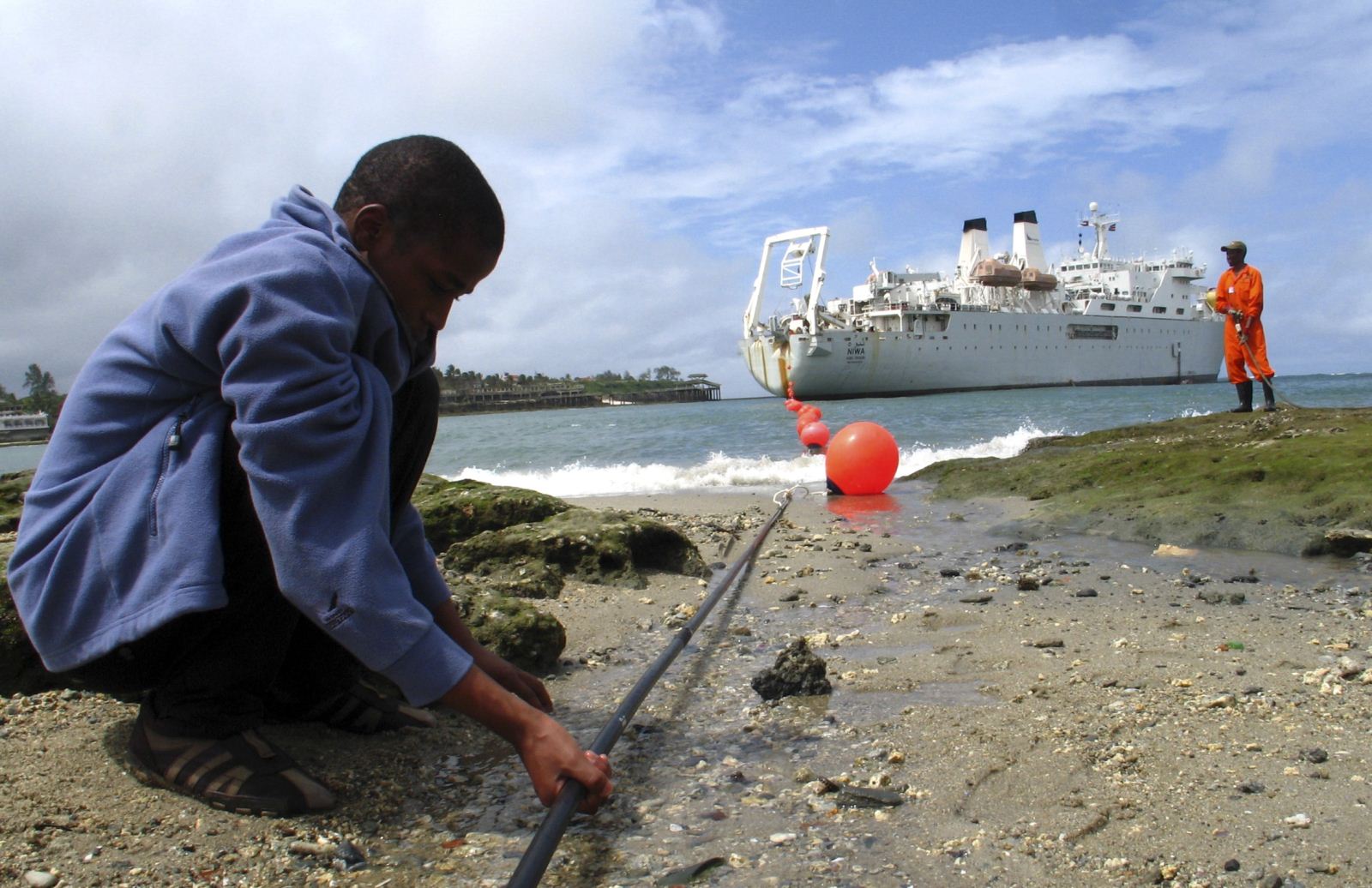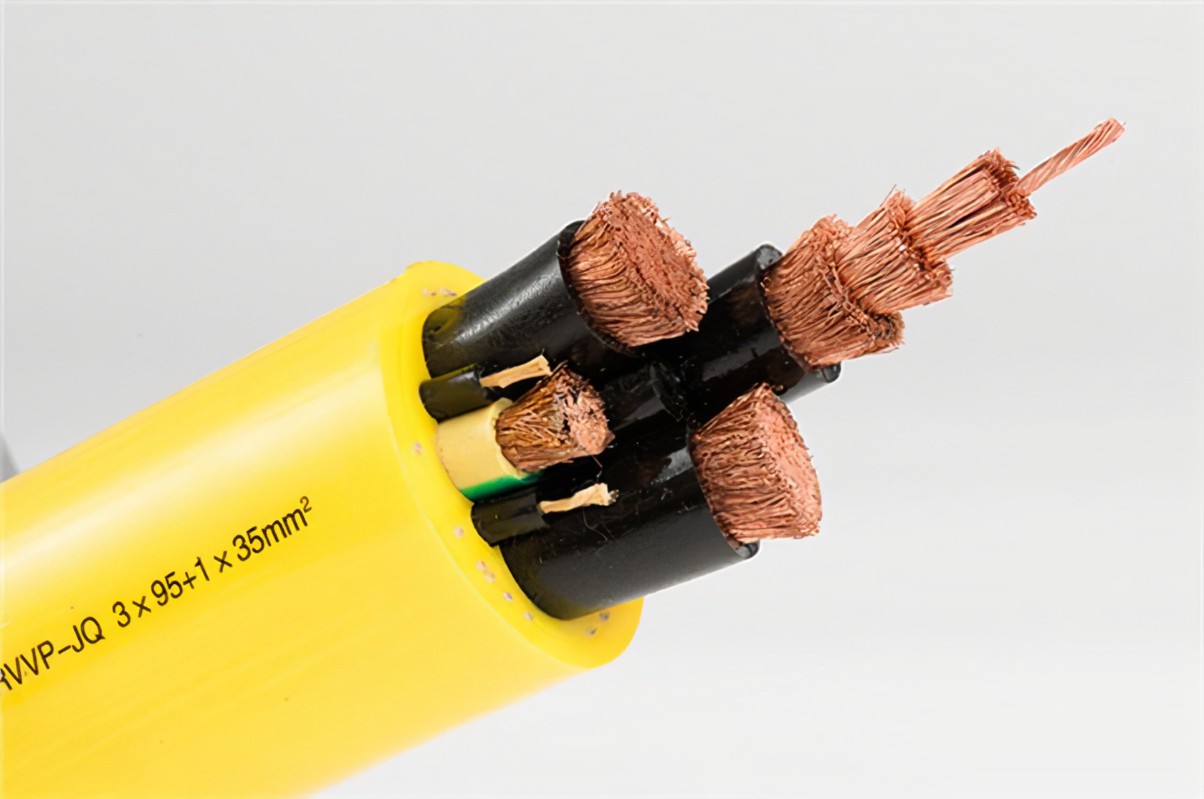As the Red Sea crisis continues, it is now spreading far beyond the surface of the sea to the seabed, and even the waters of the Red Sea are not immune.
A few days ago, several organizations confirmed that at least four Asia-Europe communication cables passing through the Red Sea have been damaged, directly affecting 25% of the data traffic between Asia and Europe. Although the Houthis had previously threatened the Red Sea underwater cables on social media, the Houthis stated the damage to the cables to clear the responsibility.
The Houthi attack on the cargo ship "Rubimar", finally sank into the sea on March 2, and along with the cargo ship sank tens of thousands of tons of fertilizer and a large amount of fuel oil, for the ecological ecosystem of the Red Sea has caused another blow.
Meanwhile, the hot war on the sea seems to show no sign of stopping. Shanghai International Studies University Middle East Research Institute researcher Niu Song said to the first financial reporter, that the current crisis in the Red Sea is continuing, and the United Kingdom and the United States of America are on the Houthi armed forces in Yemen-controlled areas of the relevant targets of the continued crackdown did not get the results of its envisaged. The Red Sea shipping lanes are still facing high-security risks, the United States, Britain, and the Houthi armed forces in the game in the Red Sea into some kind of a "dead end The game between the US and the UK and the Houthis in the Red Sea is in a kind of "deadlock".

Since the end of February, several telecommunications operators said, connecting Asia and Europe communications have serious problems. March 4, Hong Kong telecom company Hutchison Global Communications (HGC) revealed that in the Red Sea under the sea, there are four cables were cut, 15% of Asia's telecom traffic is transmitted to the West, 80% of which needs to be used to the Red Sea cables.
The company said it is re-routing the cables to minimize disruption to customers. In addition to apportioning the westward traffic to the remaining 11 Red Sea cables, it is also opening a northern route from Hong Kong, China, through mainland China to Europe, as well as an eastern route from the United States to Europe.
Previously, most damage to underwater communications cables was accidentally caused by fishing trawlers or navigable vessels dropping anchor. At present, the responsibility for the destruction of communication cables is still unclear, the Houthis reiterated on March 2 that they were not involved in the destruction, and claimed that it was the U.S. and British forces operating in the Red Sea region.
Niu Song said to the first financial reporter, in the context of the regional conflict delay, this incident is difficult to carry out a relatively objective investigation and to reach a convincing conclusion. This is not only the inevitable result of the deepening of the Red Sea crisis, but also the incident involved parties trying to "fuel the fire" of the Red Sea crisis.
It is worth noting that the damaged cables include the Asia-Africa-Europe-1 submarine cable system (AAE-1), which was commercially launched in 2017 and connects to France from Hong Kong, China. This submarine cable was initiated and led by China Unicom in 2012. At the time of writing, China Unicom had not yet stated the operation of AAE-1.
Seacom, the owner of the other severed cable, said it would be at least a month before it could begin repairs to the submarine cable, in part because of the need to apply for licenses from both the Yemeni government and the Yemeni Houthis at the same time.
As the eastern part of the Red Sea area in question is controlled by the Government of Yemen and the western part is controlled by Yemeni Houthis, permits for cable-laying operations are usually sought from both sides to ensure safety. In addition, the implementation of operations in risky waters is costly and extremely dangerous, and the daily insurance cost of the relevant vessels may be as high as 150,000 U.S. dollars (about 1.08 million yuan).
Industry insiders say the Red Sea is one of the three most important cable intersections in the world. It is estimated that 17 percent of the world's Internet traffic is transmitted through underwater communications cables in the Red Sea. Like international shipping logistics, this incident highlights the vulnerability of global communications at key nodes.
View of the British freighter Rubimar before it sank. A view of the British freighter Rubimar before it sank, Xinhua. Xinhua News Agency
In addition to testing global communications, the Red Sea crisis has also had an irreparable negative impact on the regional ecosystem. on Feb. 18, Houthis attacked the Rubimar in the Gulf of Aden with missiles, causing serious damage to the ship and forcing its crew to evacuate.
For the next 12 days, the ship, which was carrying tens of thousands of tons of fertilizer and large quantities of fuel oil, remained anchored in the waters off Yemen and slowly took on water. Leaking fuel oil formed a 30-kilometer-long oil belt on the sea surface, and on March 2, when bad weather hit the waters off Yemen, the Rubimar eventually sank, the first time the Houthis have caused a merchant ship to sink in this round of attacks.

International environmental organizations and marine experts have pointed out that the large amount of fertilizers carried by the "Rubimar" will seriously damage the ecological environment of the Red Sea and deal a heavy blow to the fishing industry in the waters near Yemen.
According to Xinhua News Agency, Abdul Qadir al-Harazi, former director of Yemen's Public Authority for Environmental Protection, pointed out that the fertilizers on the cargo ship would become "a catalyst for algae growth", and that algae would form a dense layer of cover on the surface of the water and the coral reefs, resulting in the death of a large number of corals and causing a huge blow to the biodiversity of the nearby waters.
The U.S. Central Command also issued a statement saying that the cargo carried by the Rubimar posed a huge threat to the Red Sea environment and that the sinking would also have a safety impact on ships traveling on this route. The Saudis are concerned that the oil left behind by the ship could clog the desalination facilities they are building along the Red Sea coast.
After the outbreak of the current round of the Palestinian-Israeli conflict on October 7 last year, the Houthis frequently attacked ships associated with Israel in the Red Sea and waters near Yemen to show their support for the Palestinians. Since Jan. 12 this year, the United States and Britain have launched successive air strikes against Houthi targets in a bid to weaken their attacking power.
After nearly 2 months, the situation remains unresolved. Yemeni Houthi spokesman Yahya Sarea said in a statement on the evening of the 5th that the Houthis used drones and missiles to attack two U.S. Navy destroyers sailing in the Red Sea. He also said that the Houthis will "not hesitate to expand their attacks on all hostile targets."
Earlier, US and British warplanes launched at least five airstrikes on Yemen's Red Sea city of Hodeidah that evening, according to the Houthi-controlled al-Masirah TV station on May 5, which reported that the US and British warplanes launched at least five airstrikes on the Red Sea city of Hodeidah. According to local eyewitnesses, U.S. warplanes airstrike the Houthi missile launch facilities located in the Ras Issa district in northwestern Hodeidah that day.
The delay in the Red Sea crisis has greatly harmed the interests of regional countries, especially Egypt. On March 4, Suez Canal Authority Chairman Rabiyeh revealed that Suez Canal revenues have decreased by 50% from January to the present day. The number of ships passing through the Suez Canal has decreased by 40% due to tensions in the Red Sea and the diversion of a large number of ships. Tensions have led to several international shipping companies announcing the suspension of the Red Sea route, turning around the southern tip of Africa.

Rabiyeh has previously said that although the Egyptian side has introduced measures to attract merchant ships such as discounted tolls, it is not enough to offset the security concerns of shipping companies. 2022 to 2023 fiscal year, Egypt received $ 9.4 billion in revenue from the Suez Canal. Canal revenues are one of the main sources of Egypt's state revenues and foreign exchange reserves.
People gather in front of a building hit by an Israeli airstrike in the southern city of Rafah in the Gaza Strip on February 24th. AFP People gather in front of buildings hit by Israeli airstrikes in the southern city of Rafah in the Gaza Strip on February 24th. AFP
Earlier, the Houthis said the attacks would stop only if Israel ceased fire and allowed unimpeded delivery of humanitarian aid into the Gaza Strip. The outside world expects that the situation in the Red Sea may be eased if there is a breakthrough in the recent Israeli-Palestinian peace talks.
A new round of Gaza Strip ceasefire talks was held on March 3 in the Egyptian capital, Cairo, with representatives from the Palestinian Islamic Resistance Movement (Hamas), the United States, Qatar, and Egypt, but not from Israel. The mediators hope to reach a ceasefire agreement before Ramadan, but the prospects are not clear.
ZMS believes that there is a systematic and complex linkage between the Middle East issues and that as long as the Palestinian-Israeli ceasefire and war stoppage fail to materialize, stakeholders in the regional hotspots, including the Houthis, will continue to link their demands and actions to the Palestinian-Israeli issue.